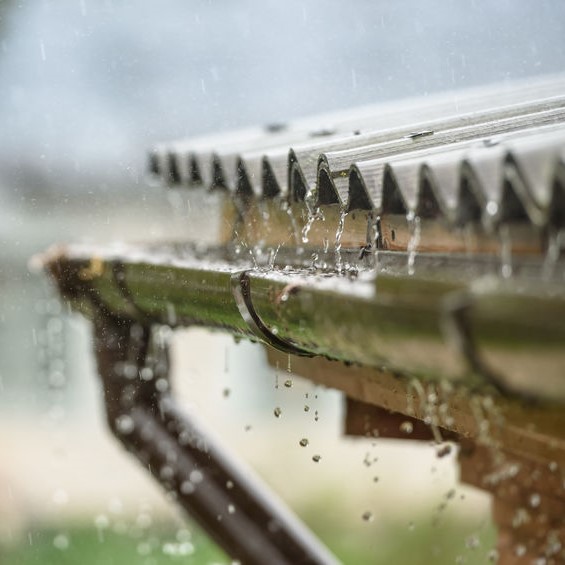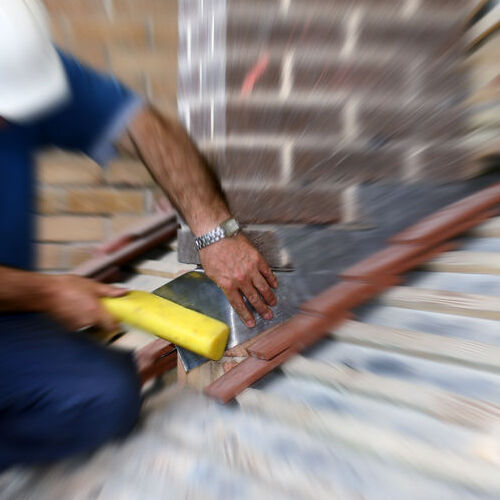
Do leaf guard gutters really work?
Over the past few years, leaf guard gutter installation has become a debate among homeowners and roofing contractors. Some love leaf guard gutters and others say they add more work to the cleaning task. So the primary question would be, do leaf guard gutters really work?
After every spring and every fall, you get the ladder out and yard gloves on, then set out to clean the gutters. The decomposing leaves, dirt, limbs, and other debris like bird and squirrel nests. It can take a whole Saturday, or the biggest part of the day.
The idea behind leaf guard gutters is to keep that stuff out of the gutter runs, eliminating the need to spend your Saturdays doing it. The advocates of leaf guard gutters say it is all dependent on proper installation to get the full potential benefits of leaf guard gutter installation.
Do gutter guards cause problems?
Those that don’t advocate leaf guard gutters are the first to tell anyone about the problems they can cause, like the debris that accumulates on top of the leaf guard, gutters start getting piles of stuff on top of the guard, affecting the curb appeal of your home.
Another factor to consider about leaf guard gutters is warranty on your roof could be negatively impacted if they aren’t installed correctly. This is a confirmation to hiring a professional contractor that has experience in installing leaf guard gutters, because there is a right way and several wrong ways. When leaf guard gutters are attached by nails to the roof shingles, or any type of hardware, this can void the roof warranty.

What are the pros and cons of gutter guards?
So, as you can see there are leaf guard gutters pros and cons, and we offer the following recap:
The benefits of leaf guard gutters:
- Money and Time: Open gutters collect various types of debris, like leaves and limbs, that accumulate and lead to clogged gutter runs and downspouts, keeping water from flowing. Yes, even with gutter guards, you’ll have to spend some time cleaning off the top of the leaf guard, gutters themselves won’t need cleaning.
- Damage Prevention: As ice and snow melt, the water runs off into the gutters and then refreezes there, then additional melting ice and snow flows over the gutter and around your home’s foundation. Additionally, that excess water becomes heavy and pulls from the house or gutters collapse.
- causes your gutter to have additional weight, and the gutter might give in. With leaf guard gutters installed, your gutters become stronger to prevent that from happening.
- Safety for Humans and Home: We’ve established gutter cleaning isn’t fun, but it also has a level of danger too with the ladder climbing factor and possible electrical shocks if you hit the wiring going into your home. If you don’t clean the gutters, they become clogged and the water that doesn’t spill over and pool around the foundation will back up under the shingles and begin rotting the roof. A leaf guard gutters installation will reduce the chances of these happening.
- Pest Infestation: With leaf guard gutters installed, the debris, dirt and water can’t accumulate. When debris and dirt accumulate, it makes a great place for critters to nest, while the standing water attracts bats, birds, insects, and more.
- Fire Prevention: Homes that are in brush fires prone areas will benefit from the extra protection that leaf guard gutters provide by keeping dry materials like leaves and twigs covered so that fire and sparks can’t get to them.
- Improved Home Value: Potential home buyers will be drawn to a home with clean and properly hung gutters, and leaf guard gutters can make them even more attractive. The funny thing about gutters, they aren’t noticed when there are installed, but a home without them, gets noticed that it needs them.
We’ve already covered how clogged gutters are worse than no gutters, but with a system of leaf guard, gutters can be a benefit to any home. So, are leaf guard gutters worth the money? For the short answer, yes, if they are installed by an experienced professional. What is the best leaf guard for gutters?
- Some people choose screens leaf guards. They are available in several types of materials and shapes, and while they are good at keeping leaves out, if you have pine needles and seeds, they can get clogged too.
- Another option is surface-tension gutter covers. Water will cling to the rounded nose and flow into the gutter, while debris and leaves fall off the edge. Small debris can get stuck but will wash out the downspout soon.
- Fine-mesh leaf guards’ function like screens and block everything but the smallest debris. Asphalt shingle grit can be problem for these, but a quick brush cleaning will clear that off and you’re good to go.
A professional contractor that has experience in leaf guard gutter system can help you with the process of how to choose leaf guard gutters that will best suit your home for the area around your home. Call Affordable Gutters Plus LLC today at 770-735-4433.


















